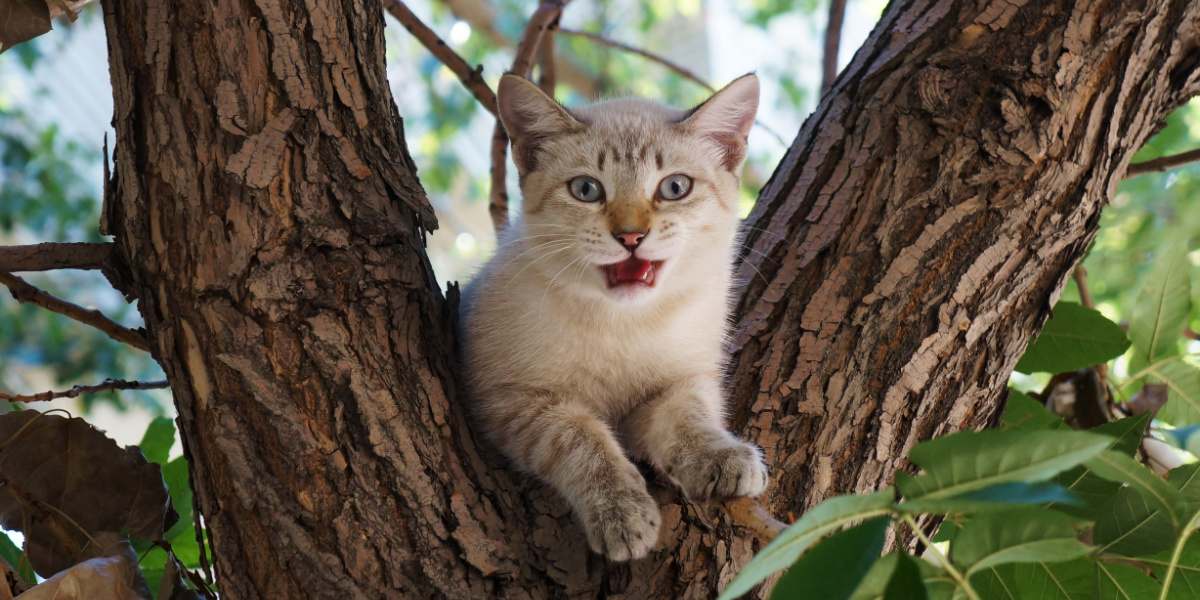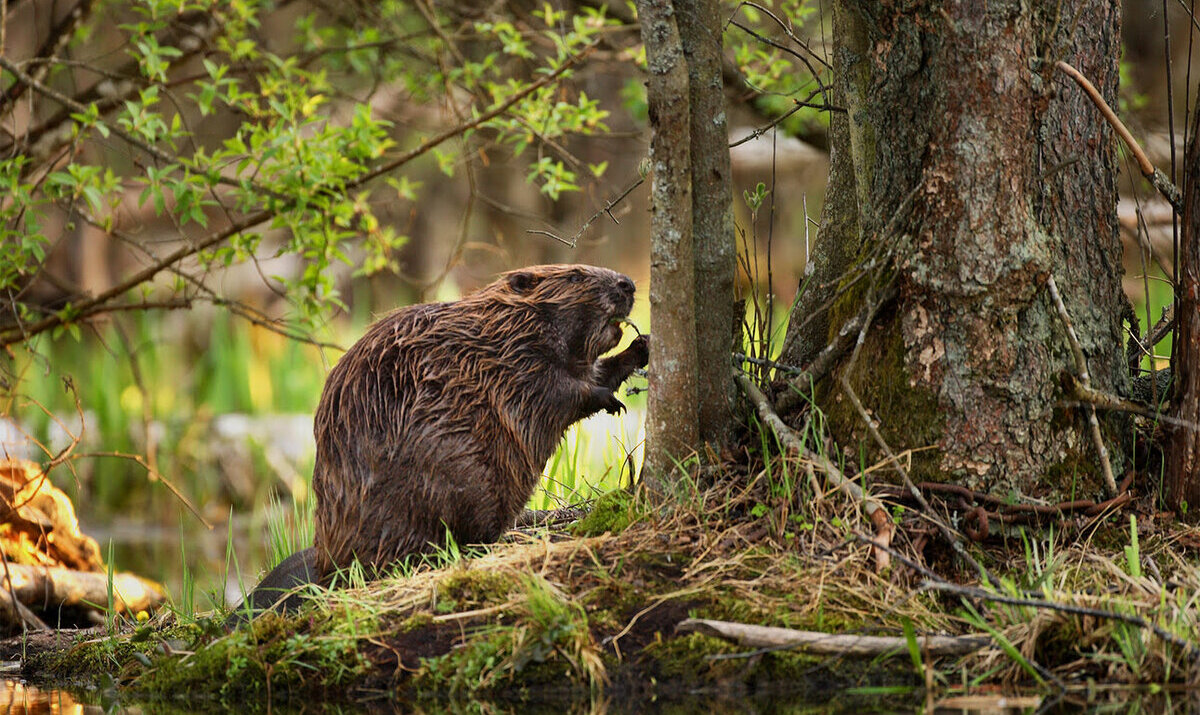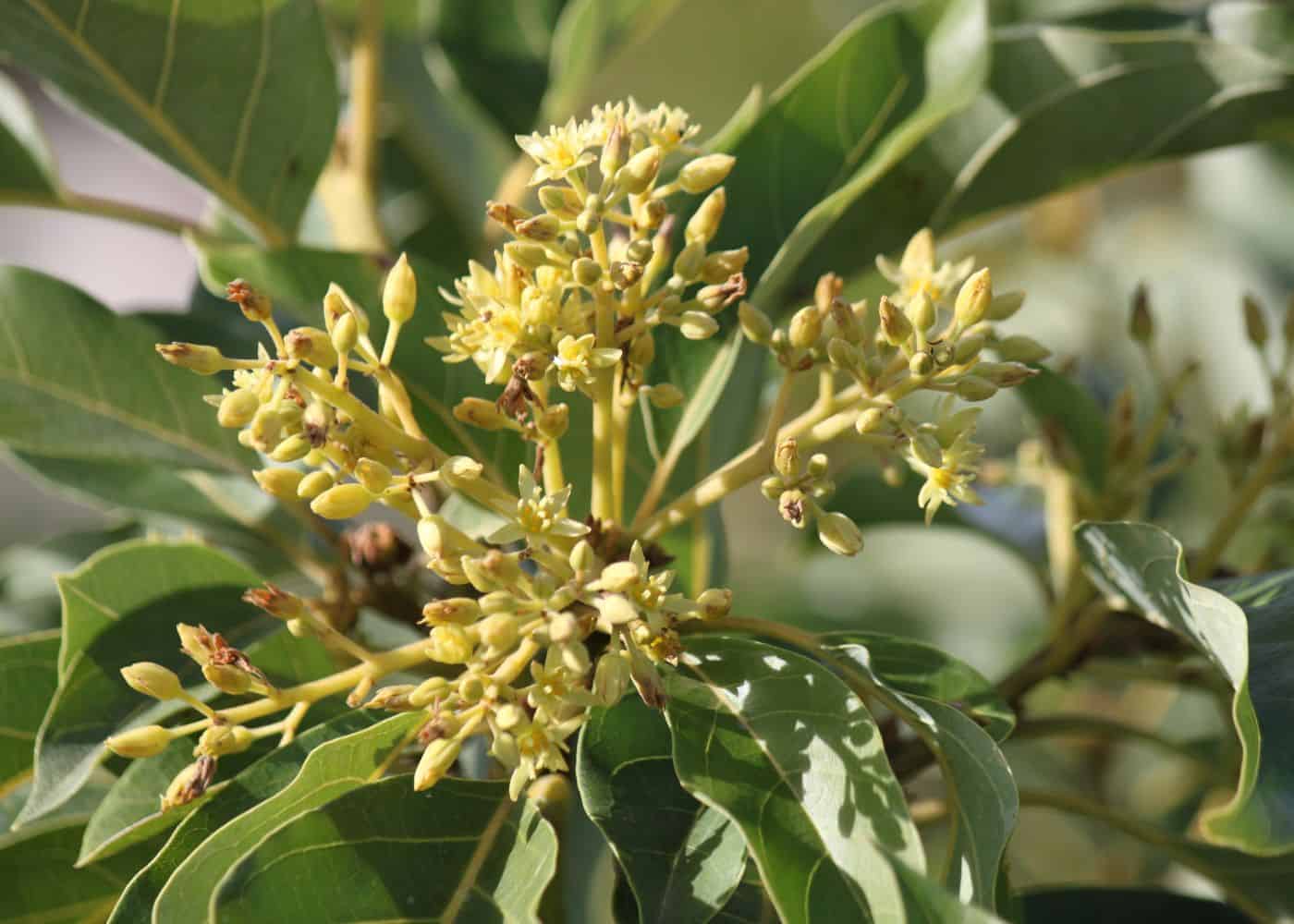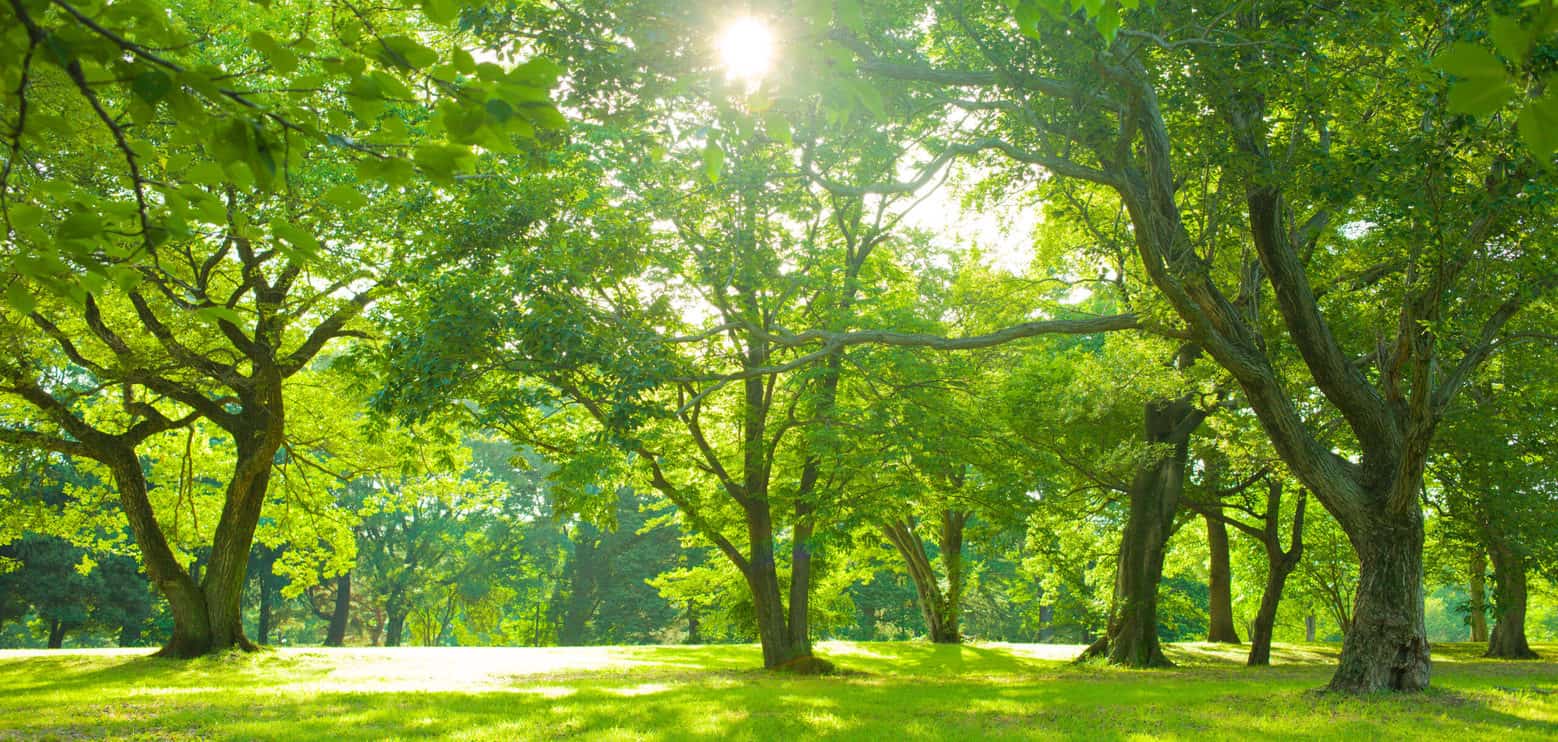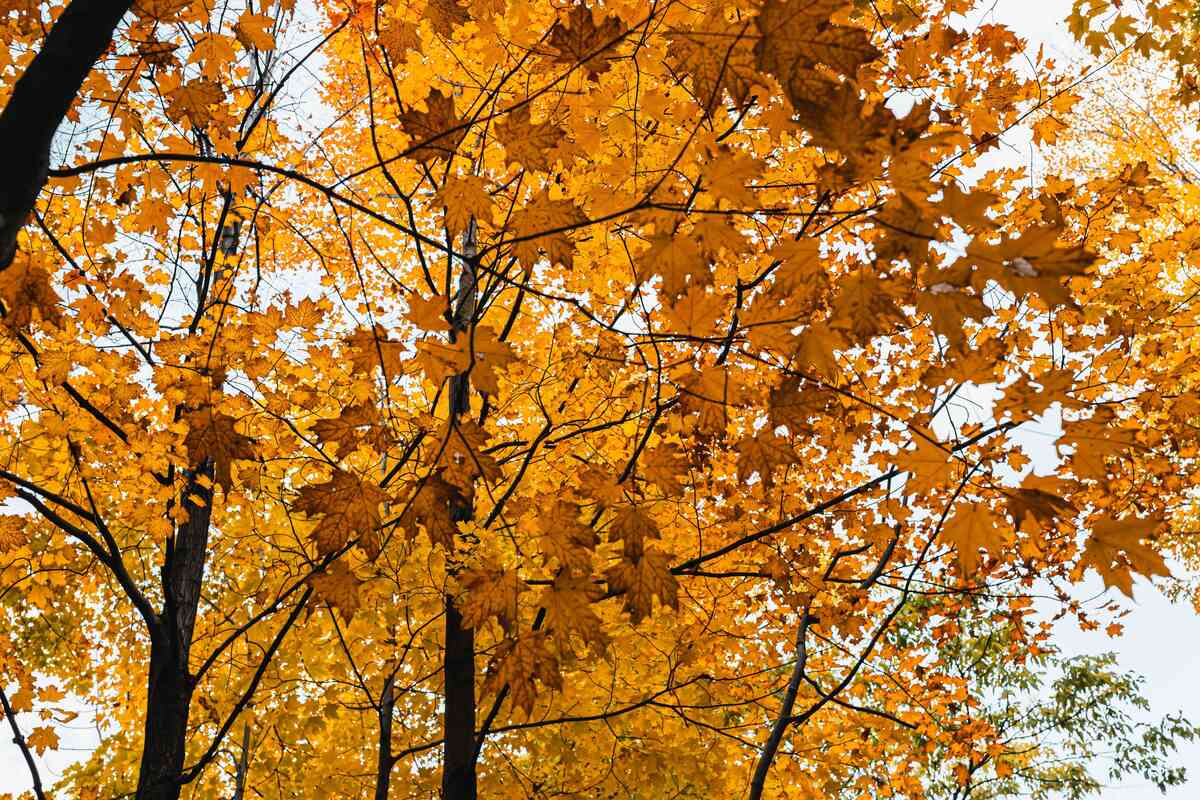Home>Gardening Tips and Tricks>Eco-Friendly Gardening>Why Do Bears Climb Trees
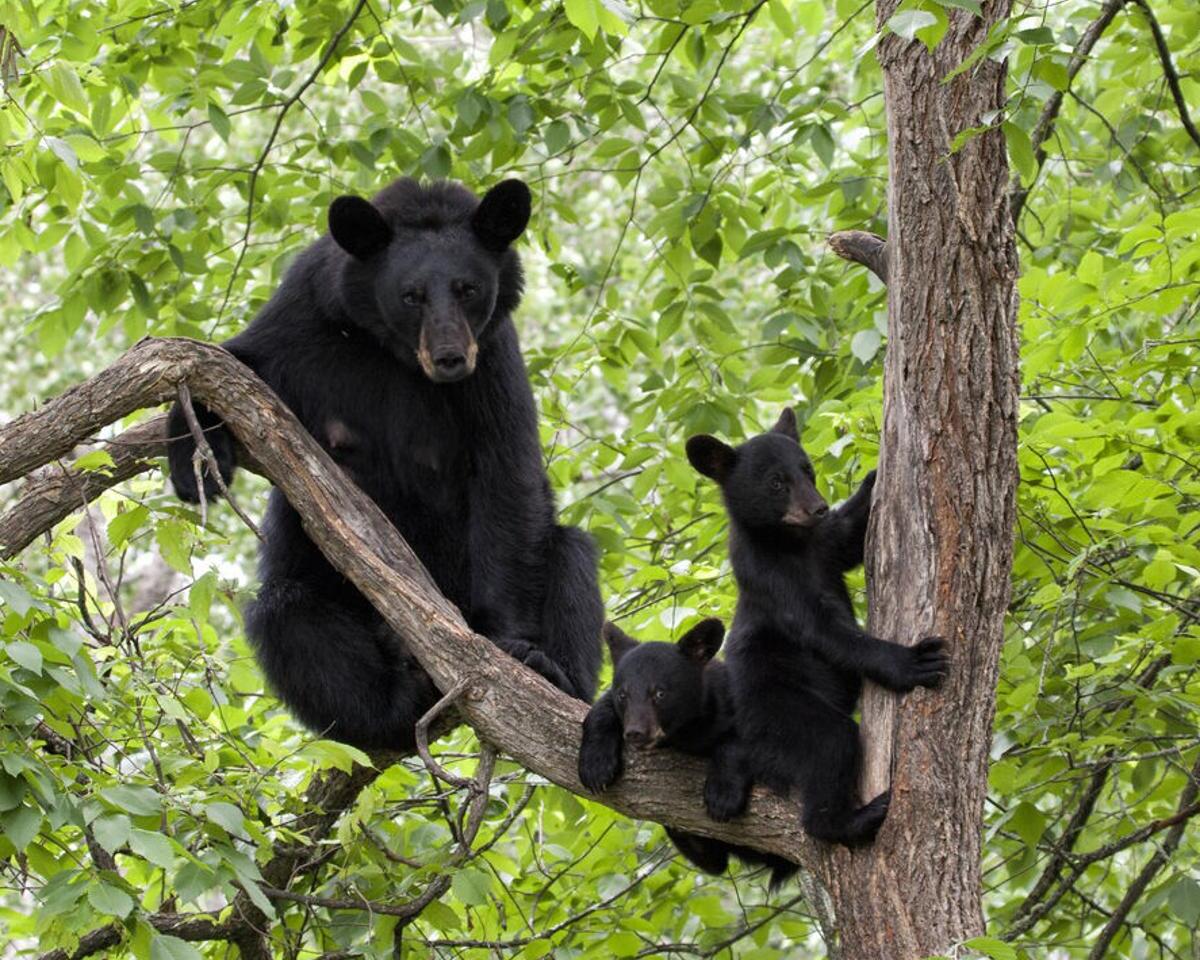

Eco-Friendly Gardening
Why Do Bears Climb Trees
Modified: January 22, 2024
Discover the eco-friendly gardening techniques that can attract wildlife, including bears, to your garden. Learn why bears climb trees and how to create a sustainable and natural habitat for them.
(Many of the links in this article redirect to a specific reviewed product. Your purchase of these products through affiliate links helps to generate commission for Chicagolandgardening.com, at no extra cost. Learn more)
Table of Contents
Introduction
Welcome to the world of eco-friendly gardening, where you can cultivate and nurture a beautiful garden while reducing your carbon footprint. In today’s era of climate change and environmental concerns, many people are turning to eco-friendly gardening practices to not only create a vibrant and sustainable garden but also to contribute to a healthier planet.
Eco-friendly gardening, also known as sustainable or organic gardening, is a holistic approach that focuses on harmony with nature. It goes beyond simply using natural and chemical-free methods; it encompasses a mindset that aims to protect and preserve the ecosystem, conserve water, and promote biodiversity. In this article, we will explore the principles and practices of eco-friendly gardening, and how you can apply them to create a thriving garden while minimizing your impact on the environment.
One of the core principles of eco-friendly gardening is to work with nature rather than against it. This means understanding the local climate, soil conditions, and ecosystem dynamics, and choosing plant varieties that are well-suited to thrive in your specific region. By selecting native plants, you are not only ensuring their adaptation to the local environment, but also supporting the local biodiversity and providing habitat for native wildlife.
Another key aspect of eco-friendly gardening is reducing the use of synthetic chemicals and fertilizers. These chemicals can leach into the soil, contaminate water sources, and harm beneficial insects, birds, and other wildlife. Instead, focus on building healthy soil through composting, mulching, and natural amendments. Incorporating organic matter into the soil improves its fertility, structure, and moisture retention, while attracting beneficial soil organisms that aid in nutrient cycling.
Water conservation is also a crucial element of eco-friendly gardening. By implementing practices such as mulching, proper watering techniques, and utilizing rainwater harvesting, you can minimize water waste and ensure that your garden stays hydrated in a sustainable manner. Additionally, consider incorporating plants that are adapted to your region’s natural rainfall patterns, as they will require less supplemental watering.
Eco-friendly gardening also extends to pest and weed management. Instead of relying on chemical pesticides, explore alternative methods such as companion planting, attracting beneficial insects, crop rotation, and physical barriers. These methods help maintain a balanced ecosystem and can prevent the need for harmful chemical interventions.
In the following sections of this article, we will delve deeper into various eco-friendly gardening practices, from soil management to plant selection, wildlife conservation, and sustainable garden design. Whether you are a seasoned gardener or a beginner, there are numerous ways you can make your garden more eco-friendly and contribute to a greener future. So, let’s embark on this journey together and create a garden that is not only visually stunning but also environmentally responsible.
Climbing Abilities of Bears
When we think of bears, the image that often comes to mind is a powerful and formidable creature roaming the forests. However, one fascinating aspect of bears is their ability to climb trees. Despite their large size and seemingly cumbersome physique, bears are surprisingly agile climbers.
Bears have adapted to their environment over thousands of years, developing physical characteristics that enable them to navigate and ascend trees effortlessly. Their strong muscular limbs and sharp, curved claws provide the necessary tools for successful tree climbing. These adaptations allow bears to not only access food sources but also provide protection and aid in communication.
One of the primary reasons bears climb trees is for hunting and foraging purposes. Bears are omnivorous creatures that consume a wide variety of foods, including berries, nuts, insects, and even small mammals. By climbing trees, bears can reach elevated food sources that would otherwise be out of their reach. This adaptability allows them to take advantage of bountiful food sources, especially during times when ground-level food may be scarce.
In addition to hunting and foraging, climbing trees also provides bears with protection from potential predators. By retreating to the safety of the treetops, bears can escape threats from other animals, including rival bears or predators such as wolves or cougars. Bears are competent climbers, often ascending high enough to find refuge in sturdy branches where they can rest, sleep, or observe their surroundings discreetly.
Tree climbing also plays a crucial role in the mating and communication behaviors of bears. During the breeding season, male bears may climb trees to mark their territory with scent markings, which serve as a visual and olfactory signal to other bears. This behavior helps establish dominance and communicate mating availability.
Moreover, tree climbing allows bears to exhibit physical prowess, showcasing their strength and agility to attract potential mates. Female bears, on the other hand, may climb trees to protect their cubs from threats or to keep them out of harm’s way until they are old enough to navigate the forest floor safely.
Overall, the climbing abilities of bears demonstrate their remarkable adaptability and resourcefulness in their natural habitat. From accessing food sources to seeking protection and participating in mating and communication behaviors, bears have honed their climbing skills over generations. This unique characteristic sets bears apart from many other large mammals and highlights their ability to survive and thrive in diverse environments.
Reasons for Bears Climbing Trees
Bears are known for their impressive ability to climb trees, despite their size and hefty build. While this behavior may seem peculiar at first, there are several reasons why bears climb trees, ranging from hunting and foraging behavior to protection and communication purposes.
One of the primary reasons bears climb trees is to access food sources. Bears are opportunistic omnivores, meaning they have a diverse diet that consists of both plant material and animal prey. By ascending trees, bears can reach a variety of food sources such as fruits, berries, nuts, and even honey found in beehives. In areas where these food sources are abundant, climbing trees allows bears to efficiently gather the nutrients they need to survive and thrive.
Tree climbing also provides bears with an advantage when it comes to foraging for insects, particularly during the summer months. Bears have been observed climbing trees to access beehives and ant nests, where they can feast on the high-protein larvae and honey stored inside. Rather than risking injury by directly confronting a nest on the ground, bears can utilize their climbing skills to safely enjoy a substantial meal.
In addition to food acquisition, bears climb trees for protection from predators and other threats. By ascending into the safety of the treetops, bears can escape potential dangers such as other bears, wolves, or even human encroachments. Bears have a keen sense of their surroundings and can quickly assess when it’s necessary to seek refuge in the branches above. This behavior not only keeps them safe from potential harm but also allows them to observe their surroundings from a vantage point, keeping a watchful eye on any approaching danger.
Furthermore, tree climbing plays a significant role in the mating and communication behaviors of bears. During the breeding season, male bears may climb trees and mark them with scent markings. These tree markings act as a visual and olfactory signal to alert other bears of their presence and territory. This behavior helps establish dominance and communicate with potential mates. Female bears may also climb trees for protection and to keep their cubs out of harm’s way until they are old enough to navigate the forest floor confidently.
Overall, bears’ tree-climbing abilities serve multiple purposes and demonstrate their remarkable adaptability in various situations. From accessing food sources and seeking protection to participating in mating rituals and communicating with other bears, climbing trees is an essential part of the bear’s repertoire of survival strategies. By utilizing their physical strength and agility, bears showcase their ability to thrive in diverse environments and ensure their survival in the wild.
Hunting and Foraging Behavior
Bears are skilled hunters and foragers, and their climbing abilities play a crucial role in their hunting and foraging behavior. By climbing trees, bears can access food sources that would otherwise be out of their reach, allowing them to sustain themselves in a variety of environments and seasons.
One of the reasons bears climb trees is to hunt for food. While bears are primarily herbivores, they are also opportunistic omnivores, meaning they eat both plant material and animal prey. By climbing trees, bears can reach high branches and foliage where fruits and berries grow abundantly. These natural food sources provide bears with essential nutrients, such as vitamins, minerals, and carbohydrates.
In addition to plant material, bears also consume insects and small mammals. Climbing trees gives them an advantage when it comes to foraging for these animal proteins. Bears can climb trees to access beehives and ant nests, where they can feast on the high-protein larvae and honey stored inside. By skillfully navigating the branches, bears can extract the nutritious rewards without putting themselves at risk of encountering defensive stings from the insects.
Climbing trees also allows bears to search for bird nests. Bears are known to have a taste for eggs, and by scaling trees, they can inspect nests and locate hidden eggs amidst the foliage. This hunting behavior allows bears to supplement their diet with a valuable source of protein.
Furthermore, bears are known to fish in rivers and streams, particularly during the salmon spawning season. While not directly related to tree climbing, fishing is another form of hunting behavior that showcases the adaptability and resourcefulness of bears. They patiently wait near the water’s edge and use their strong paws to catch fish as they swim upstream to spawn. This hunting technique allows bears to capitalize on the abundant food supply and store energy for times when other food sources are scarce.
Overall, bears’ climbing abilities enhance their hunting and foraging behavior, enabling them to access a diverse array of food sources. Whether it is climbing trees to gather fruits, raid beehives, or search for bird nests, bears have developed specialized skills to navigate their environment and secure the sustenance they need to thrive. By combining their physical strength, agility, and innate hunting instincts, bears successfully adapt to changing seasons and environments, ensuring their survival in the wild.
Protection from Predators
In the wild, bears face threats from predators, such as other bears, wolves, or cougars. Climbing trees provides bears with a natural defense mechanism and a means to protect themselves from potential harm. By retreating to the safety of the treetops, bears can evade predators and find refuge in sturdy branches.
Bears are highly adaptable climbers, using their muscular limbs and sharp claws to ascend trees quickly. Their ability to navigate trees with ease allows them to escape imminent danger on the ground. Bears can swiftly scale tall trees, reaching heights where predators may find it challenging to follow. Once in the treetops, bears can hide among the dense foliage, making it difficult for predators to locate them.
The agile climbing skills of bears play a crucial role in protecting vulnerable individuals, such as cubs. Female bears, also known as sows, often climb trees to keep their cubs out of harm’s way. By guiding their cubs up into the branches, sows can ensure their safety and minimize the risk of encounters with potential threats. This protective behavior allows the cubs to learn vital survival skills while under the watchful eyes of their mothers.
Furthermore, bears’ large size and climbing ability can deter potential predators. While bears can be formidable on the ground, their presence in the treetops can be an intimidating sight for other animals. Climbing trees not only provides bears with a temporary escape but also presents a visual deterrent to predators, signaling that engaging with a bear in the treetops may result in injury or a disadvantageous encounter.
In addition to physical protection, climbing trees allows bears to gather valuable information about their surroundings. From the vantage point of the treetops, bears can survey the area, assessing potential threats and evaluating the safety of their surroundings. This gives them an advantage in detecting any approaching predators or other animals that may pose a risk.
Overall, bears’ climbing abilities serve as a defense mechanism against predators. By retreating to the treetops, bears can protect themselves and their young from potential harm. Whether it is evading predators, keeping cubs safe, or displaying an intimidating presence, climbing trees is an essential survival strategy that ensures the resilience and well-being of bears in their natural habitats.
Mating and Communication Purposes
Bears have intricate social behaviors, and their climbing abilities play a significant role in their mating and communication rituals. Climbing trees allows bears to engage in various behaviors that facilitate successful reproduction and effective communication within their social groups.
During mating season, male bears may climb trees to mark their territory and attract potential mates. They accomplish this by rubbing their scent glands on trees, leaving behind a distinct scent marker. These scent markings act as a visual and olfactory signal to other bears, indicating the presence of a male bear and asserting dominance in a particular area.
Climbing trees also allows male bears to display their physical prowess and agility to potential female mates. By showcasing their climbing skills, they demonstrate their strength and ability to provide protection and resources. This behavior is a way for male bears to impress and attract females during the breeding season.
In addition to mating purposes, tree climbing is a means of communication among bears. When multiple bears occupy the same territory, climbing trees helps establish hierarchies and resolve conflicts. Dominant bears often claim the highest and sturdiest branches, displaying their superiority over subordinates. By observing and assessing the positioning and behavior of bears in trees, they can communicate their dominance and social status without direct confrontation.
Female bears may also climb trees for mating purposes and to protect their cubs. During mating season, female bears will climb trees to elude the advances of male bears until they are ready to mate. This behavior allows females to selectively choose their mating partners and control the timing of their reproductive cycles.
Tree climbing is also essential for the safety and well-being of bear cubs. Female bears will guide their cubs up into the branches, ensuring their protection and minimizing the risk of encounters with potential threats. By climbing trees, mothers can keep their young away from harm until they are old enough to navigate the forest floor confidently.
Overall, bears’ tree climbing behavior serves essential roles in their mating and communication processes. By climbing trees to mark territory, attract mates, display dominance, and protect their offspring, bears effectively communicate within their social groups. Climbing trees is an integral and ingrained behavior that helps ensure successful reproduction and the preservation of bear populations.
Adaptations for Tree Climbing
Despite their large size and seemingly cumbersome appearance, bears have evolved several adaptations that enable them to climb trees with relative ease. These adaptations contribute to their agility, strength, and overall climbing prowess, allowing them to navigate trees efficiently in search of food, protection, and mates.
One of the primary adaptations for tree climbing is the muscular build of a bear’s limbs and shoulders. Bears possess powerful muscles in their forelimbs, providing them with the strength needed to pull themselves up tree trunks and traverse branches. These muscular limbs give bears the ability to support their weight and maintain balance while climbing, even on irregular surfaces.
Another adaptation that aids in tree climbing is the structure and curvature of a bear’s claws. Bears have long, curved claws that are perfect for gripping and climbing. These sharp claws allow them to dig into the bark of trees, providing a secure grip and preventing them from slipping. The curved shape of the claws also helps in maneuvering on branches and grasping onto uneven surfaces.
Bears also possess flexible joints, particularly in their wrists and ankles, which facilitate agile movements while climbing. This flexibility allows them to adjust their positions swiftly, navigate tight spaces between branches, and maintain stability even on swaying or unstable surfaces. The ability to maneuver their limbs and joints with dexterity greatly enhances their climbing capabilities.
Additionally, bears have a keen sense of balance, which is essential for successful tree climbing. Their well-developed inner ear structures help them maintain equilibrium while navigating tree branches. This innate sense of balance enables them to move confidently and gracefully in the treetops.
The size and structure of a bear’s paws also contribute to their climbing prowess. Bears have large paws with strong pads and ample surface area. These adaptations provide them with stability and distribute their weight evenly, making it easier to grip branches and support themselves while climbing. The traction and grip provided by their padded paws allow bears to move securely and maintain control while ascending trees.
Overall, bears’ adaptations for tree climbing showcase their remarkable evolutionary traits. From their muscular limbs and sharp claws to their flexible joints and keen sense of balance, each adaptation contributes to their ability to navigate trees efficiently. These specialized features enable bears to access food sources, seek protection, and engage in mating behaviors, highlighting the adaptability of these remarkable creatures in their natural environment.
Types of Trees Bears Climb
Bears are versatile climbers and can ascend a variety of tree species, depending on their habitat and the availability of suitable trees in their environment. While there is no specific tree species that bears exclusively climb, they do demonstrate preferences for certain types of trees that offer favorable characteristics for their climbing endeavors.
One type of tree that bears commonly climb is the coniferous tree. These needle-bearing trees, such as pines, spruces, and firs, often have dense foliage and sturdy branches that provide a secure and stable climbing surface for bears. The conical shape of these trees allows bears to ascend them easily, using their muscular limbs and sharp claws to grip the bark and navigate through the branches.
Deciduous trees are also frequently climbed by bears. Species such as oaks, beeches, and maples have broad, spreading canopies that offer an abundance of foliage for bears to forage on. The broad, sturdy branches of these trees provide a suitable structure for bears to climb, allowing them to access leaves, fruits, and nuts that are found high above the ground. Additionally, the wide distribution of branches in deciduous trees allows bears to move more freely and maneuver among the branches with less difficulty.
Bears may also ascend fruit-bearing trees, such as apple or cherry trees, for their delicious and nutritious rewards. These trees often have lower branches that bear fruit within the reach of a bear’s climbing abilities. Fruit provides an important food source for bears, particularly during the summer and fall seasons when berries and other plant materials may become scarce.
It is important to note that the suitability of tree species for bear climbing may vary depending on their region and habitat. Bears in different geographical locations may have access to different tree species and adapt their climbing behavior accordingly. For example, bears in temperate forests may encounter different tree species compared to bears in tropical rainforests.
Overall, bears demonstrate their adaptability by climbing various tree species to meet their needs for food, protection, and mating. Whether it is coniferous trees with sturdy branches, deciduous trees with an abundance of foliage, or fruit-bearing trees offering tasty rewards, bears utilize their climbing abilities to access resources necessary for their survival in their specific habitat.
Challenges and Risks of Tree Climbing for Bears
While bears are adept climbers, tree climbing presents its own set of challenges and risks for these magnificent creatures. Despite their size and strength, bears must navigate through various obstacles and face potential dangers as they ascend trees in search of food, protection, or mates.
One of the challenges bears face when climbing trees is the risk of falling. Despite their agility, accidents can happen, especially when navigating branches that may be weak or unstable. Bears must be cautious in selecting sturdy trees and secure branches to minimize the risk of falling and sustaining injuries.
Another challenge for bears is encountering other animals, including potential threats or competitors, while in the treetops. It is not uncommon for bears to come across rival bears or predators, such as wolves or cougars, while they are attempting to seek refuge or secure food sources in the trees. This can lead to confrontations, where bears must rely on their strength and climbing abilities to defend themselves.
The canopy of trees can also pose challenges in terms of visibility and mobility for bears. While climbing, bears must navigate through dense foliage, which can obstruct their view and make it difficult to assess their surroundings. This limited visibility may hinder their ability to detect potential predators or incoming threats.
Inclement weather conditions can add an additional layer of risk for bears climbing trees. During strong winds or heavy rainfall, branches can become more brittle or slippery, making it harder for bears to maintain a steady grip. This increases the risk of accidents and falls. Bears must adapt their climbing behavior and take precautions during adverse weather conditions to ensure their safety.
Bears may also face challenges in finding suitable trees to climb in certain regions where tree density is low, such as open grasslands or tundra. In such areas, bears may have limited access to trees, which can affect their ability to find protection or access high food sources. They must rely on alternative strategies or adapt their behavior to overcome these challenges.
Human activities can also pose risks for bears when climbing trees. Encounters with humans in recreational or urban areas can disturb and disrupt bears, leading to stress and potential injuries. Additionally, the presence of human structures, such as power lines or fences, can impede bears’ climbing abilities and limit their access to suitable trees.
Despite these challenges and risks, bears have evolved remarkable adaptations and climbing skills to mitigate these dangers. Their ability to assess their surroundings, select secure trees, and adapt their behavior in different situations allows them to overcome many of these challenges while minimizing risks to their well-being. Tree climbing remains an important survival strategy for bears, enabling them to access resources, avoid threats, and thrive in their natural habitats.
Conclusion
Bears’ ability to climb trees is a remarkable adaptation that has allowed them to thrive in diverse habitats. Their climbing prowess serves multiple purposes, ranging from accessing food sources and evading predators to seeking protection and communicating within their social groups.
Through the years, bears have developed specialized adaptations that enable them to navigate tree trunks and branches with ease. From their muscular limbs and sharp claws to their flexible joints and keen sense of balance, each of these physical characteristics enhances their climbing abilities and contributes to their survival in the wild.
Tree climbing plays a vital role in a bear’s hunting and foraging behaviors, allowing them to access otherwise unreachable food sources. It also provides them with a means of obtaining protection from predators, utilizing the treetops as a refuge. Moreover, climbing trees facilitates communication among bears, both for mating purposes and establishing social hierarchies.
However, tree climbing also presents challenges and risks for bears, including the potential for falls, encounters with other animals, limited visibility, and adverse weather conditions. Nevertheless, bears have demonstrated their adaptability and resilience in overcoming these obstacles, utilizing their instincts and skills to mitigate risks and ensure their safety.
Understanding the various aspects of bears’ tree climbing behavior gives us insight into their remarkable abilities and their intricate relationship with their environment. It allows us to appreciate the incredible feats these majestic creatures accomplish in their quest for survival.
As we continue to cherish and protect our wildlife, it is important to acknowledge the significance of preserving habitat and maintaining the fragile balance between humans and bears. By promoting conservation efforts and sustainable practices, we can ensure the continued existence of these fascinating tree-climbing animals and enjoy the privilege of witnessing their awe-inspiring behaviors in their natural habitats for generations to come.
